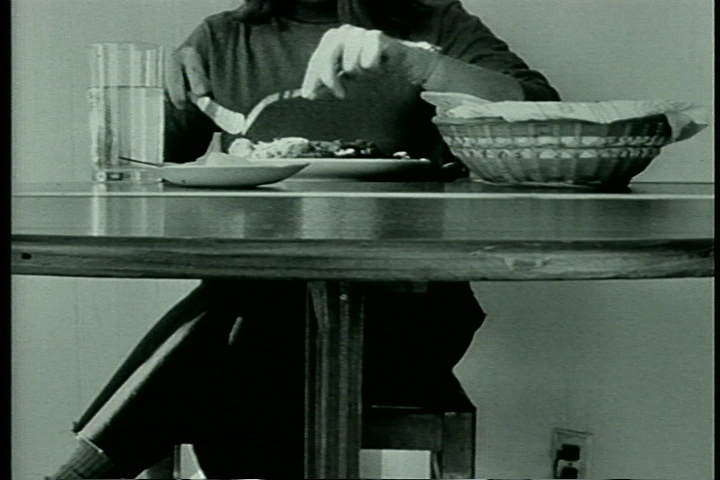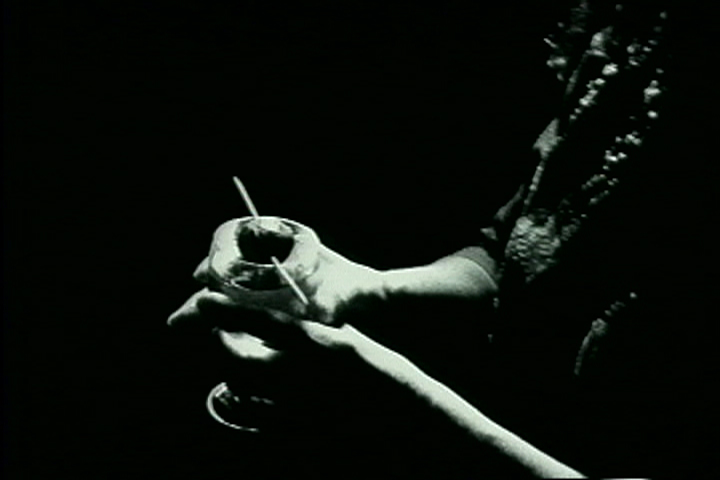By Tijana Perović
July 2, 2020
Ultra Dogme
When Lynne Sachs agreed to meet me on Skype, I was equally excited and nervous: excited, because I had just seen several of her movies, which left me feeling like I had entered a whole new world of visual and verbal language. Nervous, because her knowledge and experience in experimental/essay/documentary cinema were vast compared to mine. Nevertheless, we agreed on a meeting and it was one of the most honest and inspiring conversations I have had on film. I began the conversation by briefly introducing myself. I am a PhD student in a biology lab, where I often conduct experiments. Perhaps that is why I’m so drawn to experimental film, especially Lynne’s work.
Lynne Sachs: What you do in your lab – which is to dive into the unknown by using materials you understand, without knowing what will happen when they come together, without a script for what the results will be – shares something with experimental filmmaking. Although, as you might already know, Jonas Mekas didn’t like the term experimental. It is kind of like saying you’re an atheist, meaning you define yourself by what you’re not, so I understand, he just says: “I make films”.
Tijana Perović: Do you feel ok with the term experimental?
I personally do. I think it turns the noun into a verb because it says that the entity itself is devolving and can’t be made from a template. I like it and I think it’s liberating.
How did you get into filmmaking?
I definitely didn’t grow up watching personal art films, made by women. I hardly knew that women were making movies. But I always have written poetry and I always did a lot of art. In university, I pursued something that you might call more academic. I was a history major, but I did a lot of studio art. So in that time, when I was at university, I took a year, I went to Paris and I discovered Chantal Akerman and Marguerite Duras. This changed me. I realized that you can make films from this place of experience, or you can bring your attention to the small things in life. You could also bring in some politics or a change for women, etc.
In a sense, I got a chance to see that a film could be a vessel and that you could throw whatever you want into it and make your own recipe or idea. That was really exciting to me and a revelation. After college, I moved to New York and I started taking classes in Super 8 and video. I ended up going to graduate school in San Francisco. That was such a transformative experience, because there were so many people there.
You know Gunvor Nelson’s films? Gunvor was a teacher of mine. In fact, Carolee Schneeman, Gunvor Nelson and Barbara Hammer were all living in San Francisco at the time. Such powerful women. Powerful in a poetic way. Do you know George Kuchar’s films? They are very rowdy and irreverent. Craig Baldwin was also there. He is a filmmaker, quite renowned, almost all of his work is made from found footage. But he also has a small, still existent, screening space, called Other Cinema. It is just like a store front. And I spent almost every Saturday there, from 1987 to 1994, and that’s actually where my husband Mark Street and I met. It was a scene and that’s how I educated myself on film. I was not the kind of person who stayed up watching all the famous fiction films on TV until midnight. I hadn’t even seen Citizen Kane until I was in my mid-twenties. Now I am interested in all of film history, but that is not what brought me to this kind of filmmaking.
Funny that you mention that, because I just watched Jeanne Dielman 10 days ago.
I actually was thinking about Chantal Akerman, two days ago, because of our quarantine. Have you seen her film Là-bas (2006)? She went to Tel Aviv, to do some teaching there. It was during a very heightened period of violence, in Israel/Palestine, so she made the whole film from her window. To me, it’s very timely to think about the window as a frame in its relationship to the film frame. The thing about long films like Jeanne Dielman is their stature. You need to spend almost four hours with her film. But think about a book. When you read a book, you need to spend two weeks with it! Four hours really shouldn’t be a big thing.
What is really interesting for me in your movies is that in each one of them there is an idea, but it flowers, it grows. In your experience, how does this idea change during the process of actual moviemaking and in editing?
Sometimes when I make a film, it starts with the material. Is there any particular film on your mind?
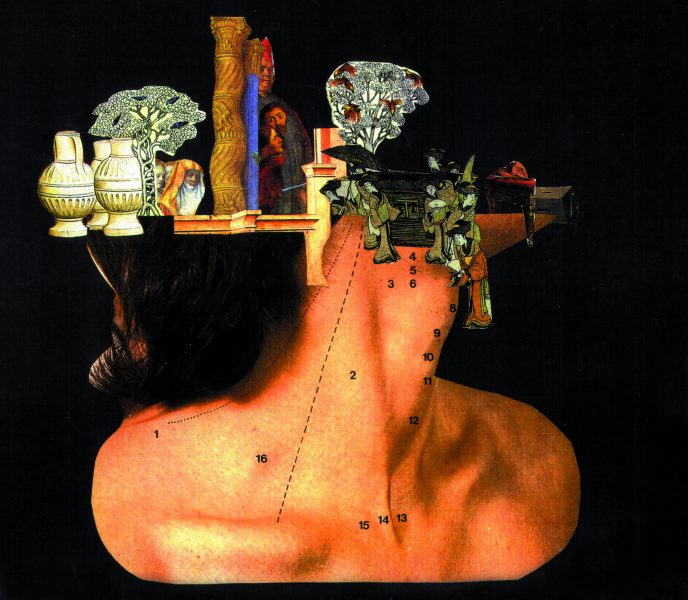
The House of Science first comes to my mind.
Then I’ll talk about The House of Science. That actually started with the collages which are in the movie. It started with the idea that I felt alienated from my own body. And I probably felt that way for most of my life, maybe until I had a baby. I wanted to move through the world almost invisibly. I don’t think that if I were 30 today, I’d make the same film. But in 1991, I felt frustrated with how my culture was constructing me. Not with the feminism, 1st wave, 2nd wave – rather as I moved through the culture and I felt this alienation from the world of science. But then it became an equal distaste for art, while I was making it. So, that was a film where I said, any idea that comes to my head will go into the film. I called it a yes film. That film is a film essay. What defines a film essay is that you are at ease with including your doubt.
So you have this idea, and it is kind of a manifesto, but it isn’t really a manifesto because you are always second guessing yourself. In a sense, you have to have more confidence in what you say by including your doubt. If you didn’t, then it would be dogma or didactic. That film really came out of an idea. Did you see And Then We Marched? It is a super short film I made after the women’s march. I didn’t have a particular idea. I had collected Super 8 film from the 2017 Women’s March, and I wanted to do something with it. I didn’t want to just document it because I thought a lot of people are already doing that. I thought I needed to shake up my understanding of what that march was, and the only way I could do that was to talk to a child. That’s been common in a lot of my work. I struggled to make The Last Happy Day for years and years, until I started to work with some children.
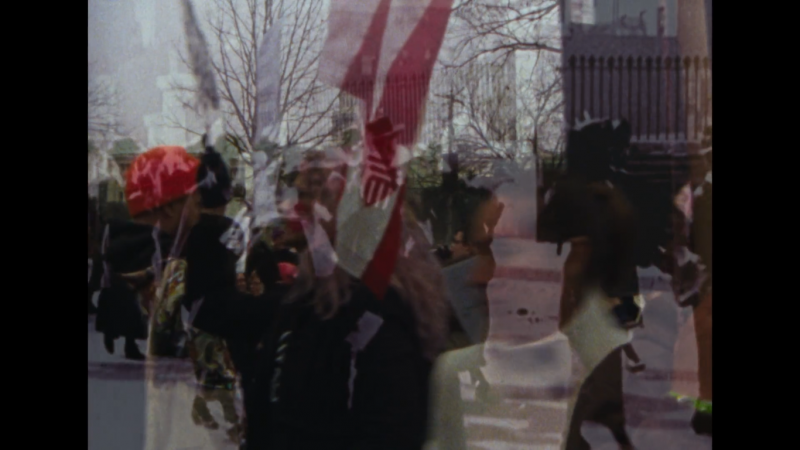
Also Wind in Our Hair, the film I made in Argentina. Sometimes working with kids doesn’t infantalize the situation, but it allows you to experiment more and listen to the materials more and to be surprised. Maybe it’s because I had two daughters and I brought them along. But I am also very intrigued by what children bring to it perceptually. So to take something as large as the Women’s March of 2017, and to think about it from that perspective was very invigorating and turned it into something more immediate. In the end, the Women’s March sadly did not have that much impact. It was like a plaintiff call, so it did connect all of us, but it didn’t bring structural change. It brought bonding amongst kindred spirits. When I’m making a film, I often have to figure out how can an idea that I had years ago can resonate today.
Last night, at 3:30 in the morning, I woke up. We’re not as active these days during the quarantine so sleeping is strange. I got up and I took a bath. But then I had this idea for a film I have been working on for many years. It is called The Company We Keep. It comes from an English expression, often you are judged by the people your are around, “the company that you keep.” Some people use this expression in a rather judgemental way. Over many years, I’ve collected business cards, so I have about 500 of them. I’ve scanned most of them. I want to make this film kind of like an animated film where we go through them. The purpose of a business (calling) card is to be a mnemonic device. Surprisingly, I can remember a little bit about almost all of those people. I am playing with the idea of how these cards trigger something, not just what I remember, but how I understand myself in relationship to them. When you look at the cards, you remember who you were when you connected with that person, but also something about them.
Last night, I wrote myself a note. Most of the people whose business cards I have kept are in a group of people I will probably never know. But in the present, there is another group of people I will never know. These are the people whom I’m hearing about who died from the coronavirus. Recently, a friend of my daughter’s told us about two African American men in her neighborhood in Brooklyn. They were quite old, already retired. For years, they would sit on the stairs (what we call here the stoop) and talk to everybody on the block. Both of them died. Then another man I know lost a brother who was autistic. As you hear those stories, you imagine those people, you imagine them almost like a cut-out, paper-doll. You imagine their shape but they are gone. I wanted to weave that into this short film, because it makes it more vital to me now.
What is your definition of feminist filmmaking?
Many years ago, when I was in grad school, we would take turns shooting each other’s movies. A woman asked me to shoot her film, which I was excited about. We were on her set but I didn’t think that what she was espousing my concept of feminism. Even though I was very honored to be her cinematographer, I could not accept the imagery that she was creating and wanted me to co-create. I have been hesitant to shoot other people’s films ever since. This was the time when I realized that we talk about feminism in terms of holding the camera in addition to how the images of women’s bodies are constructed. I don’t cheer just because a woman gets an Academy Award. I am not actually even necessarily happy that Joe Biden has already announced that he will choose a woman. I feel like he did that as a political ploy. I am happy that he is going to choose a woman, but is that why he chose this woman? I think that a feminist approach to filmmaking takes the responsibility for the representation of women, but for me it must be broader than that. It has sensitivity to other categories of identification, whether you are talking about gender identity, etc.
I loved your talk for the Ann Arbor Festival. I especially agreed when you said that Godard has challenged the film world in many ways, but never in terms of the representation of women. So, who were your favorite feminist filmmakers and your inspirations?
Definitely all three of the women in my film Carolee, Barbara, Gunvor. Each one for different reasons. I would say that they run the gamut of different approaches within the sector of personal filmmaking. I think Barbara Hammer and Carolee Schneemann were particularly at ease with their own bodies. Carolee challenged feminism in a profound way, because she was interested in sensuality, too. I think that’s very current, but she was criticized in other periods of feminism; for showing her own body, for exuding a kind of sensuality/sexuality. Barbara also showed her own body, but in a different way: it was more about strength, strength in the bareness and nudity. Gunvor Nelson made this film called Schmeerguntz. It is so wild, and it’s about motherhood, having babies, all the mess, the shit, the body, letting it all hang out. That’s kind of her take on it. They really run – to me – the gamut. I mentioned Chantal Akerman and loving her work, and her study of women’s bodies. But it’s not just about bodies, of course.
Have you heard about the Bechdel Test? Yes.
I think it’s pretty interesting for mainstream filmmaking. It’s a handy rubric for deciding what the presence of – let’s talk about narrative film – what the presence of a protagonist does or whether a character is able to speak. I think those are interesting things. They’re not the kind of films I’m making, but I do watch them, and I think that plenty of women who make it very high up in the industry, instead of trying to change that structure, actually think that the best way to get into the business is to replicate what already exists, and that’s a shame.
We had two movies at Berlinale this year that were pretty mainstream and feminist – The Assistant –
Oh I saw that! I really liked it. It’s controversial.
At her press conference, the director said that it was hard for her to get funding because she was criticizing the industry. Sometimes these norms are really hard to break. The other one was Never Rarely Sometimes Always.
I wanted to see that. It came out, and then [lockdown happened]. Now it’s online. The other movie that came out in the mainstream, like The Assistant, on the same topic – workplace dynamics – was a film called Bombshell. Did you see that?
No, but I heard about it.
Well…I did not like that movie at all. One of the reasons was, they were talking about the abusive power in the workplace, by men who had financial or other kinds of control in the workplace. But the people who were playing the women actually were bombshells. Do you know this expression? It’s old fashioned. A bombshell is an incredibly beautiful woman.
The movie’s called Bombshell because it’s about these women who are television anchors on broadcast news, who have to be bombshells to get those jobs, but then the story is that they also have to sleep with the boss. But the film, in its texture and representation, never breaks the mould. The women who play the parts are always presenting themselves with the best bodies and make-up, etc. Whereas in The Assistant, everything becomes much more austere and cerebral, and you think about the protagonist – who she is at her desk. I thought it was much more effective.
Another filmmaker who has had a very big influence on me is the Argentine director Lucretia Martel. I study her films, to help me figure out things, around editing. I’ve really been affected by her work.
Did you have a plan for your career? How did you find your direction?
The lucky part was that I found this way of working, and relationship to the media, that I loved. I think that’s been a setback for plenty of good friends of mine: they didn’t necessarily find something they were passionate about doing. I just continue to be excited about it. I had to find ways to make that work for me. The most practical thing I did when I moved to San Francisco, was that I enrolled in a program at a public university that also had a whole cinema studies component. I had a lot to catch up on, in terms of developing a foundation for the understanding of cinema. But the degree was a Master’s degree, and then there was an art school there at the time – The San Francisco Art Institute.
They offered a Master’s of Fine Arts – which in the States is considered a terminal degree, not just the first step. I ended up doing both programs because I was thinking ‘I might want to teach’ and I have been teaching pretty consistently for all these years, but I never aspired to a tenure track job. I’ve taught at probably 15 different art schools or universities, but I wasn’t trying to raise myself up in academia. So that was the most practical thing I did. The other part was that depending on where you teach, it could be hard to have time to do your work, e.g. if they have 7 classes a year. It depends on what is expected. I have had good relationships with places where I was teaching where they gave me funding for a project. Here, we have all different kinds of grants: we have grants from the government (which are not that big), or grants from private foundations, like the Guggenheim foundation.
How did you develop your aesthetic? Did you look back at your earlier works and think ‘oh I could have done this better’ or are you happy with each step?
No, not necessarily happy. Oh my God, sometimes I look at the credits and think ‘oh why did I do that? Why did I have so many names?’ I’m actually in the midst of doing some preservation work on some of my older films. I’m doing part of it with the Museum of Modern Art, they’re working on my film Which Way Is East. It’s been interesting because I’ve had to look at it very carefully, and they are very fastidious. They said, ‘when we make a new 4K scan, you can’t push us to try to make it look like you made this in 2020, because you made it in 1994’. You think about the film stocks and things like that.
NYU has a preservation program, and they are studying the preservation of one of my very first short films, it’s called Still Life with Woman and Four Objects. We’re working on that. They just transferred it to 4K.
That movie actually made me think of Chantal Akerman a lot.
Thank you for saying that. I was also very affected by Yvonne Rainer. I had seen Akerman for sure by that time, because I’d seen her in France, but I don’t know if I’d seen Yvonne Rainer’s [work].
My newest film is called Film About a Father Who. There’s a famous film that Yvonne Rainer made, called Film About a Woman Who… – from the ’70s. I have definitely been very influenced by Yvonne Rainer, but then I would say her films are more austere than mine are.
But you asked about aesthetics. I can’t impose any one aesthetic that I might’ve discovered on the next project, because the idea is the boss. The idea drives the aesthetic, mostly. Sometimes I just shoot, and it’s like I re-find my own material. Did you see this short film I made called Starfish Aorta Colossus?
No.
The whole film is shot with a regular 8mm camera that you wind-up. It’s collaboration between myself and poet Paolo Javier. That material I had shot over decades, and then he asked me if I would make a poem in honor of his book being published. I thought it was a good excuse to go back and look at all this old footage. It wasn’t like I created the footage for his poem, but I put it together in response to his poem.
What was it like to have Bruce Conner as your mentor?
I had kind of like a short-term boyfriend, and he introduced me to Bruce. I was just getting involved in filmmaking, so I had negative skills. But we got along well. Some people thought he was a bit of a curmudgeon, but he wasn’t to me at all. I would just go to his house – I was supposed to be helping him splice his films, but he would look at my splicing ability and think it was so terrible that he ended up doing it himself.
I went once a week and he would tell me stories the whole time. We would just talk and talk. He had a long-term kidney problem. He actually lived for twenty more years, but he would always have to take a rest so I would hang out with his wife. Over the years, when both my children were born, he gave them lovely drawings and we stayed in contact. His found-footage work is profound. The ideas that happen between every shot in A Movie are so fantastic. Nothing is about ‘the archive being precious’ – [instead] the archive is about a way of finding irreverence, or irony, or poetry or politics. He was interested in the clash, rather than the archive being an illustration of a moment in history.
Does your approach change — and if so, how — when working with digital versus celluloid?
It takes a lot more for me to be excited about images that are shot on digital.
[She shows me a work in progress, from which the following still was taken.]
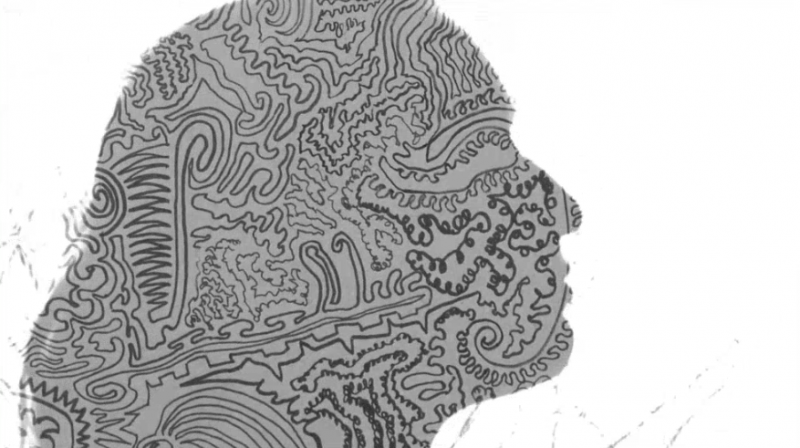
I like the unpredictability of film – the fact that as she circles around, you go into these dark areas. It can happen in video too, but I like the way it works on film, especially in black and white: the background that’s black becomes one kind of canvas, versus another kind of canvas. I also like that it’s not perfectly sharp, because I think that in television there’s too much attention on the face. The less you show, the more interesting the face is. The precision of digital and its ability to replicate reality makes it less compelling to me. Sometimes I shoot digital work I really do like. But in digital, people tend to overshoot: hours and hours. With film, I only shot three minutes of my daughter [running in cirlces], so I have to work with that.
It’s interesting how the film shapes what you make. I watched the XY Chromosome Project. [Made in collaboration with her husband Mark Street.]
That’s also the name of our – we sort of have a film company. It doesn’t really mean a company, but… you know. I’m glad you watched that.
How was it to collaborate? Did you plan it together and then shoot separately? Or did you shoot separately and then come together?
We made that during a period when our daughters, who are 23 and 25, were younger. We initially made it for this performance space here in New York that was also a restaurant, called Monkeytown. They’ve moved all over the world. There’s one person who runs it and sometimes I hear he’s in Australia, sometimes in Berlin. He had this restaurant (with delicious food), where everybody sat on the floor. They had projectors, so you could project on all four walls of the room. We thought it was Cartesian, so we had an X and a Y. But we also thought about XY as in Chromosomes, so that’s where we got the name.
We’ve made quite a few films together. More than films, we created projection evenings, and things like that. We did something at the Microscope Gallery, for example, here in Brooklyn. Anyway, in this particular case, Mark and I had each shot some of our own material, and we said we had to edit the film together: he would edit a shot, and I would come in on the same computer and edit the next one, like a Surrealist Exquisite Corpse. We constructed it that way, so it was not pre-planned.
How does language that you use mediate or affect your creative process? Language is so interesting in your movies. It’s very rare to find somebody who is so visual and lingual at the same time. Somehow people tend to choose one or the other.
That’s really true. And I think that’s one of the reasons I don’t necessarily identify with certain kinds of ‘purist’ wordless experimental films – but then I also really don’t identify with traditional documentaries that aren’t as playful with the image.
The thing is, that poetry is very close to experimental films. If you think about it, poetry breaks all the rules of grammar, a line break is like a cut between the shots. It makes sense that you don’t have to say ‘cine-poem’, but that poetry is in conversation with not just a love of a language, but a heightened love of language that would work with a heightened love of the film frame. Instead of it being one or the other. But for many people it is one or the other. I’m just excited about both.
It’s really nice. Maybe it’s because I’ve been watching mostly male experimental cinema for the longest time. I suddenly switched and thought maybe it’s just because women are more verbal.
That definitely could be. It’s interesting because Barbara Hammer and Carolee Scheemann both did a lot of writing. I would say in Carolee’s films, the words weren’t that important, but she wrote many books, and she was very engaged with text.

